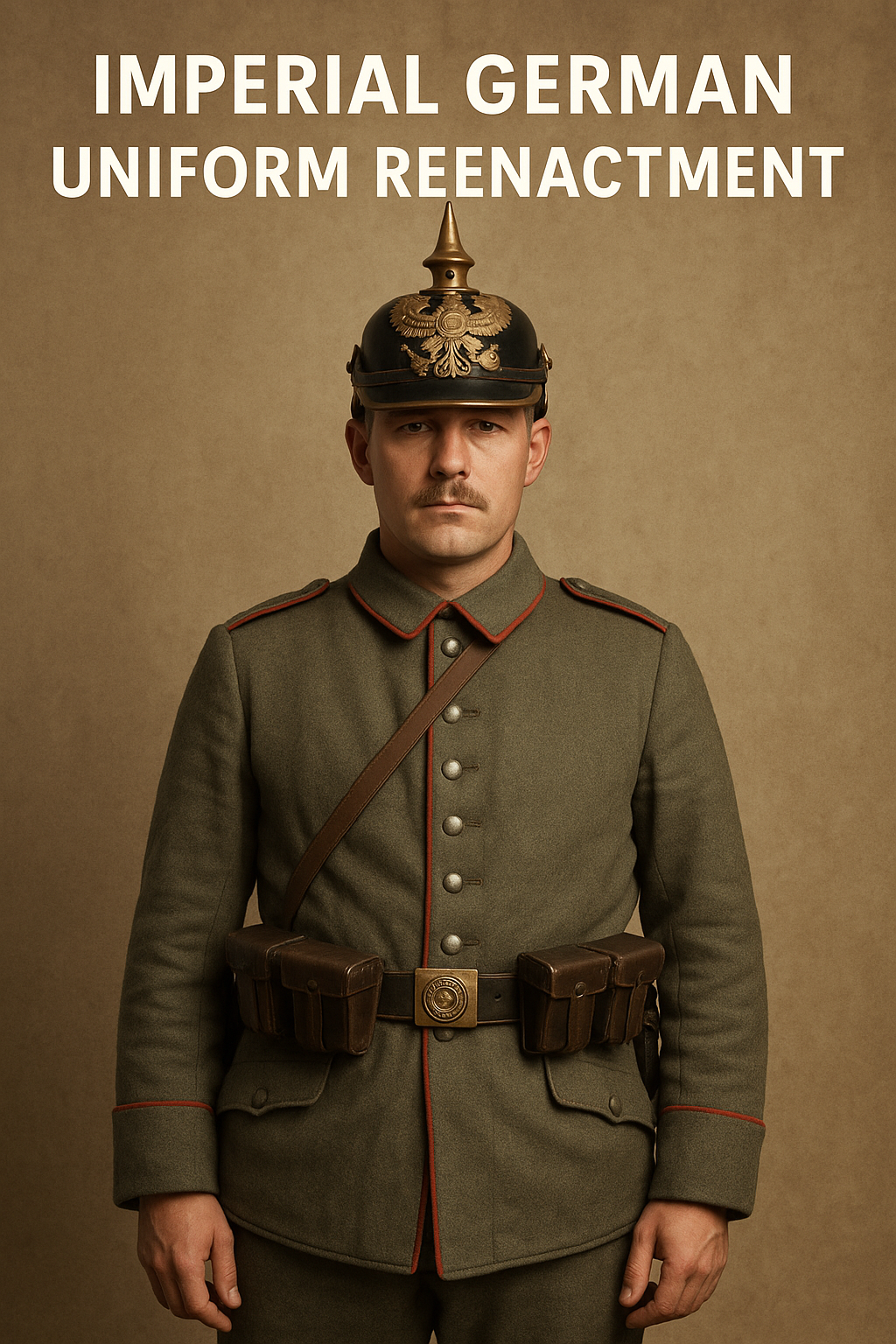
Top Tips for Choosing a High-Quality WW1 German Uniform
Published on Aug 03, 2025
Imperial German Uniform Reenactment: A Complete Guide for History Enthusiasts and Collectors
Introduction: Why Imperial German Uniform Reenactment Matters
The world of imperial German uniform reenactment has gained significant traction among history buffs, reenactors, and collectors who seek to relive and preserve the stories of the past. Reenactments not only honor historical legacies but also allow participants to experience history in a tangible and immersive way.
At the core of a compelling reenactment is authentic attire—and that’s where Paddelaters.com, with over 8 years of expertise in crafting high-quality war uniforms, shines. Our reproductions are tailored with historical accuracy and craftsmanship in mind, ensuring each piece stands up to scrutiny from even the most discerning enthusiast.
Historical Significance of WWI German Uniforms
The German military uniforms of World War I reflect a rich and complex heritage. With Prussian influences and regional variations, these garments represent more than mere battle attire—they symbolize identity, hierarchy, and honor.
Key highlights include:
- M1910 Tunic (Feldbluse): Standard issue for most soldiers, known for its field-gray color.
- Pickelhaube Helmet: The iconic spiked helmet worn by German troops.
- Shoulder Straps & Piping: Indicated regiment and rank.
- Officer vs. Enlisted Differences: Officers wore more tailored uniforms with finer materials.
These details play a vital role in reenactments, making authenticity a top priority for collectors and participants alike.
Key Features to Look for in a WWI German Army Uniform
Before purchasing a WWI German uniform, understanding what to look for is crucial. Here are key elements to evaluate:
FeatureDescriptionAuthenticity | Look for historical accuracy in design, cut, and color.
Material Quality | Wool, cotton, and leather were commonly used in period uniforms.
Craftsmanship | Hand-stitched seams, brass buttons, and proper insignia placement matter.
Sizing & Fit | Ensure proper measurements for comfortable reenactment wear.
Vendor Reputation | Choose trusted sources like Paddelaters.com.
Want to learn more about how German uniforms are recreated? Check out our in-depth blog on Reproducing History: German WWI Uniform Parts for Collectors and Reenactors.
Officer vs. Enlisted: A Comparison Table
AttributeOfficer UniformEnlisted UniformFabric | Higher-grade wool, sometimes with silk trim | Standard-grade wool
Insignia | More ornate and specific to rank | Basic shoulder straps and piping
Accessories | Sword, belt buckles with crest | Standard belt and cartridge pouches
Price Range | $350–$700+ | $150–$350
Explore our full collection of WW1 German Army Uniforms to find authentic officer and enlisted options.
Use Cases: Why People Buy WWI German Uniforms
- Reenactment WW2 and WW1 Events: Historical reenactments bring the battlefield back to life. Authentic gear is essential.
- Film & Theater Productions: High-quality replicas enhance realism on screen and stage.
- Collectors' Displays: Showcase military heritage with historically accurate replicas.
- Educational Institutions: Museums and schools use uniforms as teaching tools.
Looking for accurate WW2 replicas too? Browse our WW2 German Army Uniforms for Halloween or historical purposes.
Top Tips for Choosing a High-Quality WW1 German Uniform
- Know Your Regiment: Research the regiment you want to portray for accurate insignia and piping.
- Measure Correctly: Reenactments require mobility—ensure proper sizing for movement and layering.
- Choose Trusted Vendors: A reliable source like Paddelaters.com guarantees quality and authenticity.
- Match Accessories: Don’t forget tunics, belts, boots, and Pickelhaube or Stahlhelm helmets.
- Check Reviews: Authentic feedback helps verify product legitimacy and vendor reliability.
For more guidance on choosing a high-quality WW1 German uniform, visit our article on exploring authentic tunics, hats, and legacy.
FAQs: Imperial German Uniform Reenactment
1. What makes an imperial German uniform different from a WW2 uniform?
WWI German uniforms feature earlier designs such as the Pickelhaube, simpler field tunics, and different insignia systems than WW2 counterparts.
2. Can these uniforms be used as German WW2 Halloween costumes?
While WWI and WW2 uniforms differ, WW2 replicas from Paddelaters.com make for detailed and respectful Halloween costumes or themed events.
3. Are these uniforms accurate enough for museum displays?
Yes, our uniforms are made with historical research and authentic materials, ideal for professional and educational use.
4. How do I know if a WW1 uniform is a replica or original?
Originals are rare and often deteriorated. Quality replicas from trusted vendors are labeled clearly and offer durability for wear.
5. What accessories are needed for a complete reenactment outfit?
Standard pieces include tunics, trousers, boots, helmets, belts, and pouches. Optional: trench coats, bayonets, and insignia.
6. Can I wear these uniforms in public reenactments legally?
Yes, provided you follow local laws and event rules. Avoid using real weaponry or offensive insignia.
7. How should I maintain my reenactment uniform?
Dry-clean wool components, store in a cool dry place, and brush off dirt regularly to maintain fabric integrity.
Call-to-Action
Ready to step into the boots of a WWI soldier? Explore our complete collection of imperial German Army uniforms at Paddelaters.com and begin your journey into history with trusted, high-quality reproductions made by experts.
